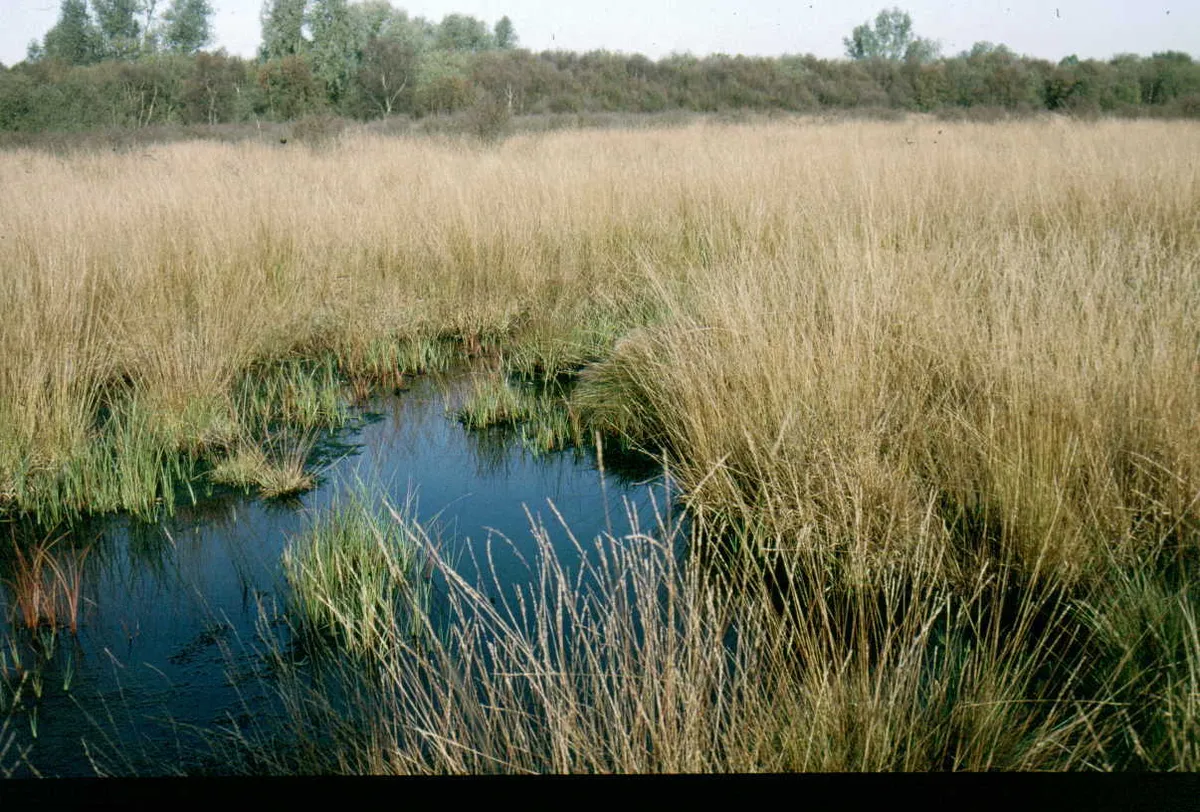Earlier this summer, naturalist and arachnologist Richard Burkmar was surveying a bog in Cheshire when he found a tiny jumping spider just half the size of a matchstick head.
Further research revealed that it was Sibianor larae, a spider species that has never been seen in the UK before.
“We were delighted to hear about all the special discoveries that have been made at our Holcroft Moss Nature Reserve,” said Sarah Bennett from Cheshire Wildlife Trust. “The site is particularly special as it has never been exploited and cut for peat; something which is unusual for most peatland in the UK.”
“A number of other rare bog spiders were also discovered during the surveys, including the jumping spider Heliophanus dampfi, making it the only site in England where this has been recorded. It is definitely a special site for bog loving wildlife.”
However the background to the story of this species’ discovery in the UK is almost as good as its addition to the UK fauna list.
When he found the spider, Burkmar recognised that it was a type of jumping spider belonging to the Sibianor genus, of which the only UK species was believed to be S.aurocinctus.
This is a rare species in the UK, thought to confined to the south-east (with occasional sightings further north) and it would be a new species for Burkmar.

A return visit to the site, with another arachnologist Richard Gallon (who had also never seen S.aurocinctus), resulted in finding more of these spiders.
They separately examined their specimens at home under microscopes, and each realised that the spiders didn’t quite match up to the descriptions of S.aurocinctus, but instead to S.larae – a species of jumping spider found on the continent and never recorded in the UK.
They then e-mailed each other with their thoughts – at the same time!
Following this remarkable crossing of e-mails, they then contacted Dmitri Logunov, a world jumping spider expert who was just up the road from them at Manchester Museum.
He confirmed that Burkmar had indeed found the first recognised sighting of S.larae in Britain, and he would know because as well as being a world expert on these spiders, he also wrote the original description of this species when it was new to science in 2001 – naming it after his wife Larisa Logunov (Lara is an abbreviated form for Larisa)!
However it seems that this spider has been under our radar for quite a while, because in the meantime, Gallon had been attempting to track down some old Sibianor specimens at the World Museum in Liverpool, where he found one labelled as S.aurocinctus, collected in 1924 in Lancashire.
It was re-identified by Logunov as S.larae, proving that this species is not actually a newcomer to the UK. Unfortunately the peat bog where it was originally collected from cannot be surveyed again, as it has since been destroyed and is now a landfill site.
Further investigations are now underway to seek out more Sibianor specimens in museums to piece together the spider’s former distribution and where it might still be present.
“Due to habitat loss there may, however, be no other suitable places left in Britain. Emphasising the importance of this site and undamaged bog habitat in general,” said Gary Hedges, Tanyptera Regional Entomology Project Officer at World Museum.
As of 16 August, they have tracked down a specimen collected from Thorne and Hatfield Moors in Yorkshire, which they plan to re-examine.
The current belief is that S.aurocinctus is present in south-east England across a range of habitats, whereas S.larae is a bog specialist, and any northern records of Sibianor are more likely to be the newly recorded S.larae.
It looks like this species might be identifiable in the field, a rarity for small spiders. As well as differences in genitalia (seen under a microscope), S.larae has red knees on its front pair of legs whereas S.aurocinctus has much darker knees.
"Finding a spider never before recorded in Britain is the most exciting thing that has happened to me in ten years as an amateur arachnologist," says Burkmar. "That it was a charismatic little jumping spider is icing on the cake!"
